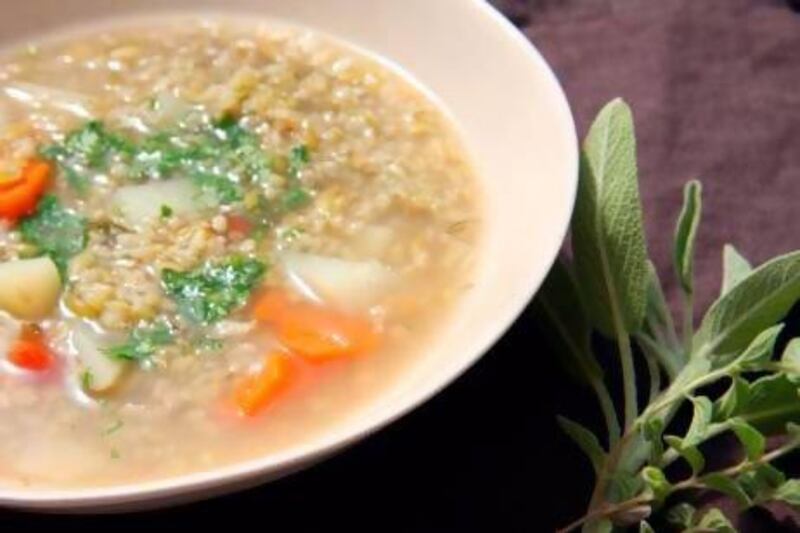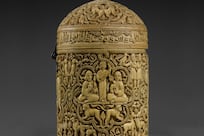It's been around for centuries and is made from one of the world's most common staples - so why is freekeh fast becoming one of the big food crazes of 2013?
The traditional Middle Eastern wholefood, made from semi-ripe grain, has certainly broken out internationally. Long championed by celebrity chefs such as Jamie Oliver, whose website dubbed it a "favourite new superfood", it's now turning up on forward-looking menus across the world. Freekeh's nutritional punch is also pushing it towards superfood status, riding a wave of interest in "exotic" wholegrains. It's all quite a reversal for a food that's been quietly popular around the Eastern Mediterranean since prehistory.
While freekeh remains a newcomer outside the Middle East, its sole ingredient is actually very familiar - it's made with plain old wheat. It's the unique production process this wheat goes through that makes it special. Grain for freekeh is harvested in early spring, while still green and moist. Instead of being threshed to remove its husks, the wheat is gently roasted over an open fire, scorching off and loosening any chaff (the name freekeh itself derives from the Arabic word "rubbed", describing the grain's post-roast scrub). The grain inside, however, is still too moist to burn, leaving behind a part-roasted, pale green kernel with a deliciously smoky, herby flavour. This process doesn't just give freekeh its taste; it keeps the raw wheat's high protein and mineral content largely intact.
Ghina Hamoui, a nutritionist at Emirates Hospital and Cosmesurge, explains that the unprocessed wholeness of the finished product can make freekeh very healthy indeed.
"At 10 per cent of its weight, freekeh has a much higher fibre content than rice. It has a fair amount of proteins, is almost null in fat, the small traces of which are polyunsaturated fatty acids that are good for the heart. It also has a good amount of vitamins and minerals, especially B1 and B2. While it should be avoided by coeliacs and people on gluten-free diets, it has a lower glycemic index than rice which means it gives more satiety and fullness as well as raising blood sugar less."
It also seems that traditional beliefs in freekeh's suitability for new mothers aren't entirely misplaced. As Hamoui says: "Freekeh is considered a lactogenic food because of its content of B vitamins found in its crust."
The result is a super-nutritious, fibre-rich food that is digested slowly - exactly what health-conscious dieters the world over are seeking.
Freekeh's current popularity boost, however, is also being fed by controversies surrounding that other popular super-grain, quinoa. So successful has the South American foodstuff proved recently that it's now too expensive for its Andean growers to eat themselves. Socially conscious diners are thus exploring other options, and freekeh is seen as a viable, equally healthy alternative. American diners have particularly taken to it. Los Angeles' Sqirl cafe, for example, is dishing up freekeh with pickled blueberries, chanterelle mushrooms and goat's cheese, while the hip New York vegetarian pop-up Birdbath offers freekeh burgers with apple and miso.
But while it's hip in the US, freekeh is perhaps too familiar to cause a stir in the Arab world. The Dubai-based cookery writer and chef Suzanne Husseini, currently writing a second recipe book bursting with freekeh recipes, is trying to change this. "I always felt freekeh was the overlooked grain," she says. "Until recently it was little-known across the world, while in its home region it can be taken for granted. I think that's a pity, because I am really in love with freekeh. In the best quality freekeh, where its smokiness is evident and it still has that typical greenness and chewy texture, it's just so unique."
Freekeh makes a great alternative to rice, but as Husseini points out, it also responds brilliantly to imaginative combinations such as mixing with onion, butternut squash and dried fruit to stuff a turkey, or using a handful to add a hint of smokiness to a rich chicken soup. For home cooks trying out freekeh for the first time, this recipe mixes it with bulgur, a similar grain, to create a delicious pilaf speckled with colour.
Follow us
[ @LifeNationalUAE ]






